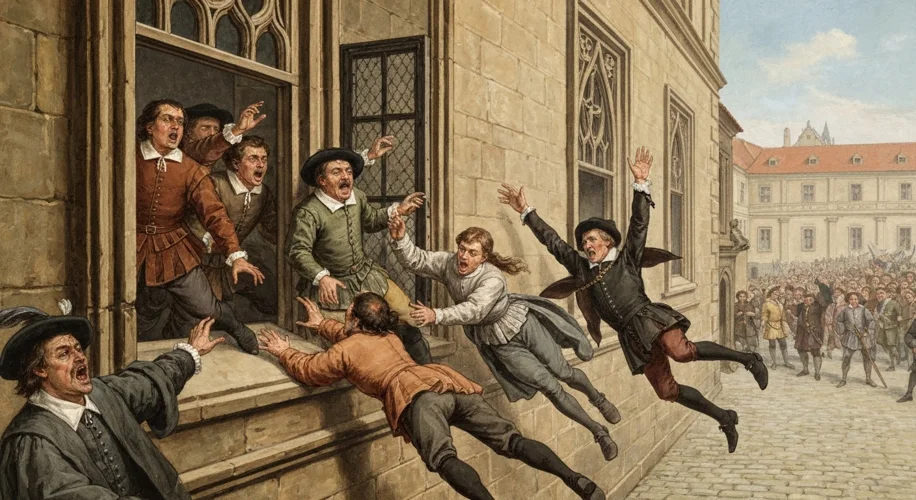Try to imagine: Prague, May 23, 1618. The air in Prague Castle hung thick with tension, a palpable mix of religious fervor and political defiance. For years, the Protestant Bohemian estates had chafed under the increasingly autocratic and Catholic rule of the Habsburg emperors. The Emperor Ferdinand II, a fervent Catholic, had been systematically eroding the religious freedoms guaranteed to the Bohemian Protestants, igniting a slow-burning fuse of resentment.
At the heart of this simmering conflict were figures like Vilém Slavata of Chlum and Jaroslav Bořita of Martinice, two high-ranking Catholic officials serving as Imperial Regents. To the Bohemian estates, they represented the oppressive hand of Habsburg power and the suppression of their faith. On the other side, the Protestant estates, led by figures like Count Thurn, saw themselves as defenders of ancient Bohemian liberties and the true faith.
Then came that fateful Thursday. A delegation of Protestant nobles, fueled by a potent cocktail of righteous anger and religious conviction, stormed into the council chamber within Prague Castle. The scene was set for a dramatic confrontation. Accusations flew, tempers flared, and the carefully constructed diplomatic niceties shattered. The enraged nobles, feeling they had exhausted all other avenues of redress, made a drastic decision. They seized Slavata and Martinice, along with their loyal secretary, Philip Fabricius.

With a forceful shove, the three men were propelled out of a 70-foot high window. Little did they know, their fall would not be to a swift end, but to a soft landing that would become legendary. They tumbled through the spring air, a terrifying plunge that would have surely meant death for most. However, fortune, or perhaps divine intervention, intervened. They landed in a massive pile of refuse and manure accumulated in the castle moat below. Miraculously, aside from bruises and shock, they survived the harrowing fall.
The immediate aftermath was a mix of disbelief and exhilaration for the Protestant nobles, and a rallying cry for the Catholics. While the survival of the officials was often attributed by Catholics to divine intervention, Protestants saw it as a sign of their just cause. This act, known as the Second Defenestration of Prague (the first occurred in 1419), was not merely a violent outburst; it was a clear, unambiguous declaration of rebellion against Imperial authority.
This audacious act of defiance became the spark that ignited the powder keg of Europe. It signaled the official start of the Bohemian Revolt, which rapidly escalated into the Thirty Years’ War (1618-1648). This protracted and brutal conflict would engulf much of the continent, pitting Catholic powers against Protestant ones in a devastating struggle for religious and political dominance. The war ravaged landscapes, decimated populations, and reshaped the political map of Europe for centuries to come.
The Defenestration of Prague serves as a stark reminder of how deeply religious conviction and political grievances can intertwine, leading to catastrophic consequences. It highlights the perilous path taken when dialogue fails and defiance escalates, demonstrating how a single, dramatic event, born from years of suppressed anger, can plunge an entire continent into decades of war. The men who fell from that window in 1618, and the men who pushed them, inadvertently opened a window not just in Prague Castle, but onto a war that would define an era.

